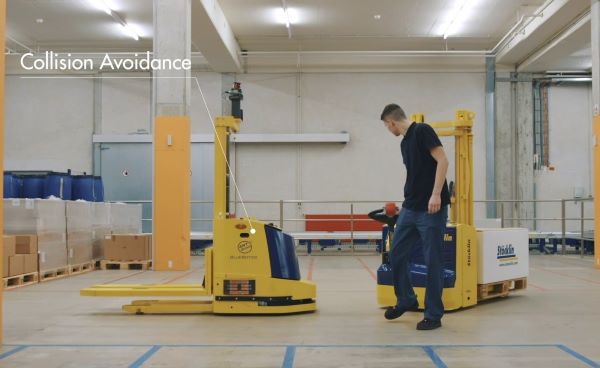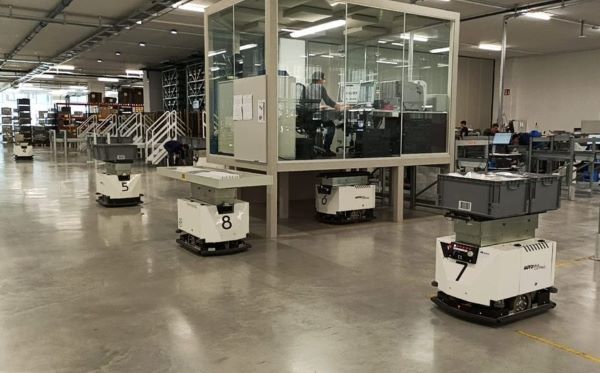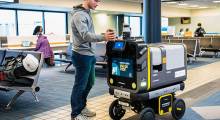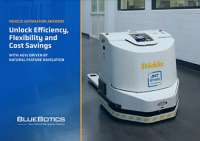BlueBotics SA this week said it will be a featured presenter at the 5th International Conference on Mobile Robots and Industrial Logistics and Warehousing Solutions, or CeMAT Asia 2023.
The St. Sulpice, Switzerland-based company plans to lead an interactive keynote session on “Making AGVs & AMRs Work Together – 3 Interoperability Approaches Explained.” It will describe the recent surge of interest in the interoperability of automated guided vehicles (AGVs) and autonomous mobile robots (AMRs), wrote Rachel Rayner, marketing and digital content manager at BlueBotics.
BlueBotics will also explain the benefits of interoperability, describe the forces driving a surge of interest in systems using natural navigation, and forecast where the technology is headed. It is co-exhibiting with parent company ZAPI Group.
CeMAT Asia 2023 will be in Shanghai on Oct. 23 to 27.
BlueBotics examines interoperability
BlueBotics said its presentation will explain the pros and cons of available interoperability approaches—including lockdowns, standards-based approaches, and interoperability software platforms. A featured video will document a real-world, multi-brand server solution that uses an advanced interoperability architecture to dramatically simplify the management of its robot fleet.
“Our recently commissioned survey of mobile robotics users, “Automated Vehicles in Material Handling 2022/2023,” indicates that those involved in purchasing mobile robotics rank interoperability almost as high in importance as brand reputation and load capacity,” said Martin Hu, regional sales manager of BlueBotics China. “In this presentation, we will look closely into what is driving that trend and how the logistics industry can optimize mobile robotics investments for the near and long term.”
Dr. Nicola Tomatis, CEO of BlueBotics, added: “The survey confirms our belief that the adoption of automated vehicles will continue strongly for many years, driven by the challenge of hiring and retaining material handling workers, the continued need for increased efficiency, and cost savings in challenging global conditions. We are especially gratified to see such strong current use of natural navigation, as users see the value of automating material handling operations.”

Study finds fleet demand growing
More than 70% of respondents to the BlueBotics survey said they plan to extend their mobile robot fleets within the next two years, most by three or more vehicles.
Between Nov. 28 and Dec. 14, 2022, independent research firm Logistics Business interviewed 180 respondents from 29 different countries, 87% of whom were involved in purchasing automated vehicles.
Virtually all respondents used some automated vehicle to improve their operations, and most planned to expand usage soon, noted BlueBotics. The results also indicated increasing acceptance and trust in automated vehicle technologies, high adoption of natural navigation methods, and significant interest in interoperability.
Key findings:
Automated vehicles are widely used. More than 70% of the respondents have adopted or plan to adopt AMRs or AGVs, and 21% were using self-driving forklifts. The average fleet size was 7.7, consisting mostly of AMRs or AGVs. Only 17% used more than one type of vehicle.
Robots find diverse uses. Respondents used AGVs to compensate for staff shortages but generally not to reduce headcount. Applications included moving payloads to or from conveyors, palletizers, and wrappers; packaging or other end-of-line applications; pallet toting and retrieval; and picking.
About a third of the respondents cited on-site safety as a reason for adopting automated vehicles.
Natural navigation is the most popular guidance method. About 3 out of 4 respondents were using vehicles guided by natural navigation methods, with others using laser triangulation, inductive wire, magnetic tape, and QR code or tag-based systems.
The market continues to grow. Ninety-one percent of respondents plan to extend their AGV or AMR fleets, with 81% planning to do so within the next two years. Most said they will purchase between three and 10 vehicles.
Interoperability is trending. The need for new purchases to interoperate with one another and other plant technology was listed as important as brand reputation and payload capacity, as respondents seek to avoid relying on a single vendor.
The need to measure return on investment (ROI) remains. But how they will measure that return remains of concern. The two most-cited approaches included comparing cost savings to manual or automated vehicle technologies and productivity increases. They were followed by break-even time, accident reduction, and staff acceptance.
Article topics
Email Sign Up




















